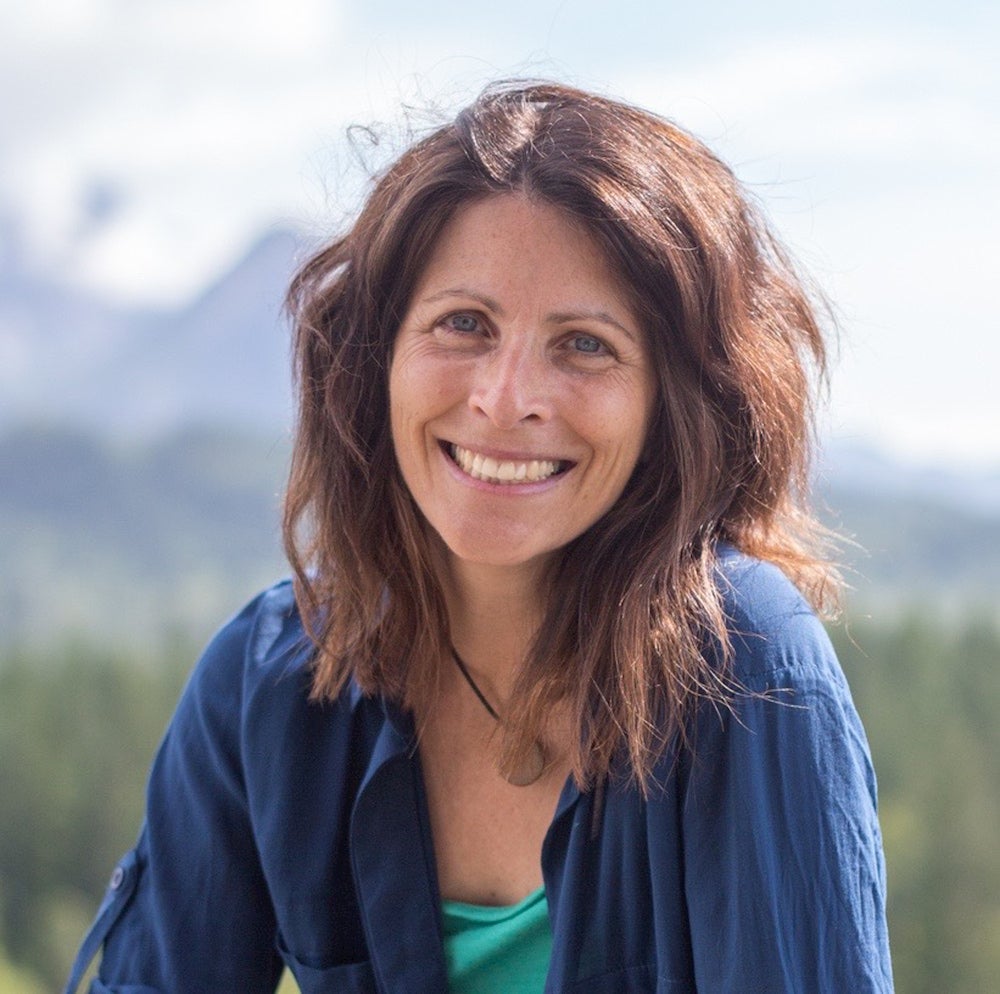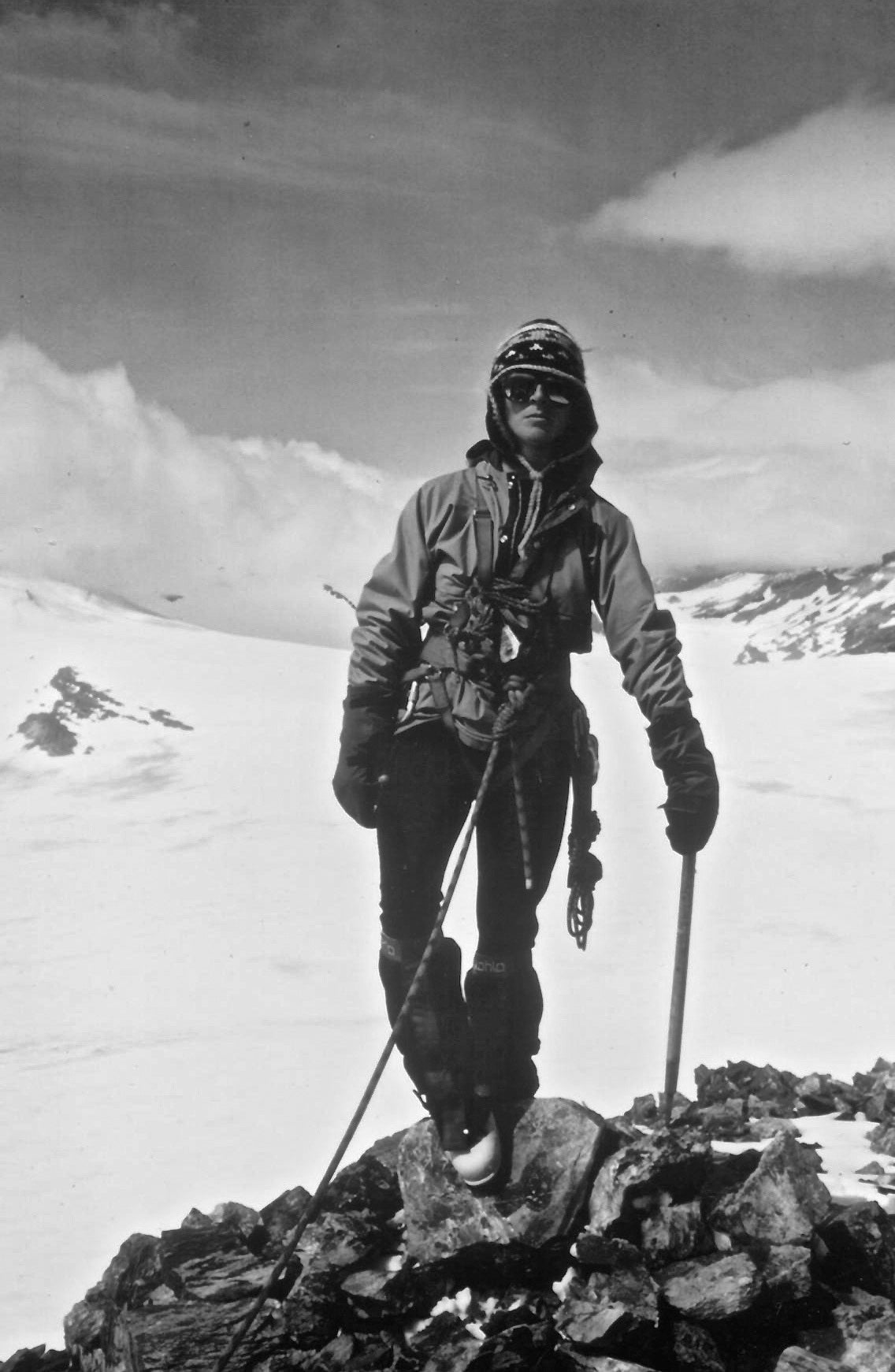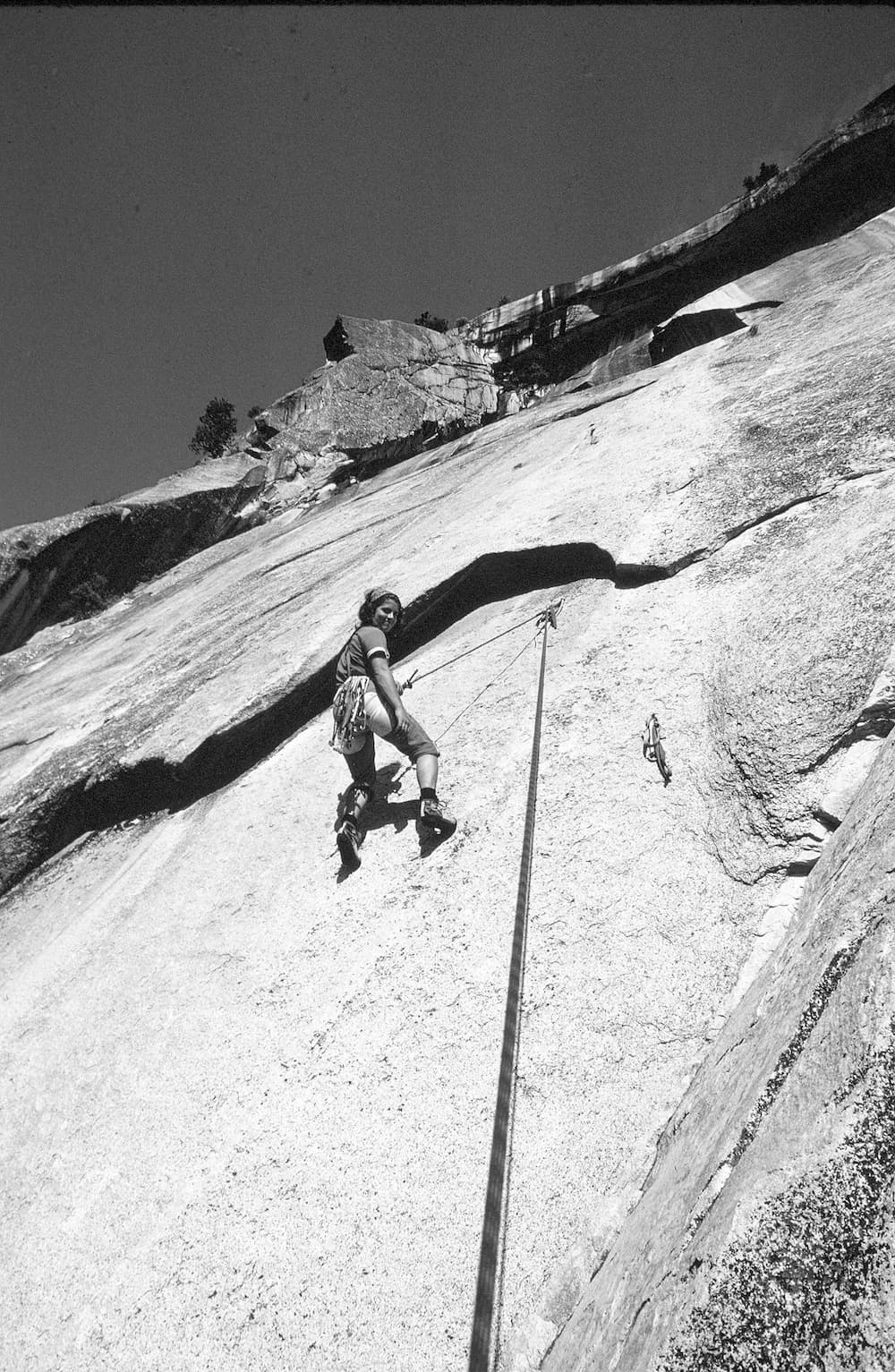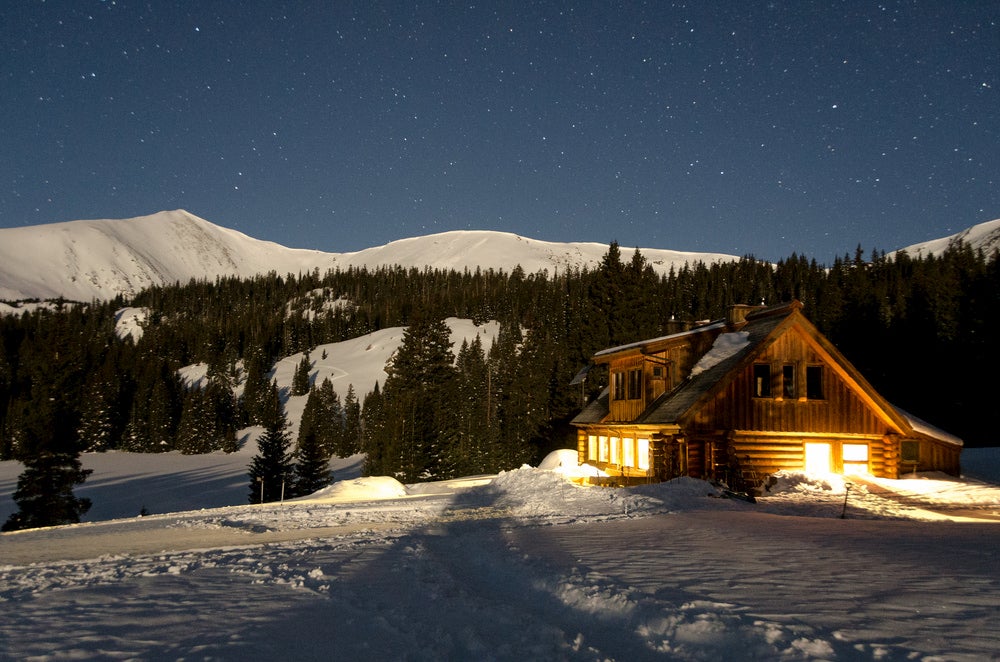“Bravery takes practice,” Jan Redford reflects in the epilogue of her recent memoir, “End of the Rope: Mountains, Marriage, and Motherhood.” Redford is someone who has scaled frozen waterfalls and faced near-death experiences whitewater kayaking. Yet reading her story, it’s clear that these extreme adventures are not the only things that make a person brave.
Motherhood takes bravery. Breakups take bravery. Self-reflection takes bravery. And yes, leading a climb in Yosemite Valley takes bravery.
Jan Redford Uses Outdoor Adventure to Highlight the Power of Mountains, Marriage, and Motherhood

Image courtesy of Jannicke Kitchen Photography
Set against the backdrop of thrilling ice climbs and high-stakes mountaineering, Jan Redford’s “End of the Rope” tells the story of a woman doing her best to raise two children, gain an education and navigate a complex relationship dynamic, all while trying to hold onto her identity as a wild outdoor woman.
Whether she’s clinging to a rock face or fighting with her husband, it’s not Redford’s goal to make you feel comfortable. Through raw, authentic writing, she reminds her readers that there is extraordinary in the ordinary. And, while many of us may not find ourselves drawn to the same intensity as Redford was in her outdoor pursuits, you don’t need to be a mountaineer to relate to her story. “End of the Rope” reminds readers of the everyday victories we must learn to celebrate on the journey to fully becoming who we are.
Redford answered some questions for us about her latest book—the paperback version was released on May 14, 2019.
Empowering Women in the Outdoors
The Dyrt: In your book, you touch on what was a very relatable dynamic between women and men in the outdoor space. You describe this while climbing with your friend, Rik, in Yosemite: “He was talking to me like I was an idiot, the way I overheard boyfriends talking to their girlfriends at the base of a climb. But I had come to Yosemite to really climb, not to follow some hot-shit climber around. When I climbed with guys, it was too easy to give up the sharp end of the rope, and lately, I started to feel I was being guided.”
As a climber, as an adventurous woman, what are some ways you’ve found to counteract this common dynamic of men defaulting into leadership roles in outdoor recreation? How do we create environments where women feel confident and empowered to embrace their full, independent bad-assery?
Jan Redford: When I started climbing, I learned a lot from older, experienced guys, and got up climbs I couldn’t have with people of my own ability, so my skill level increased quickly. But because of the discrepancy in ability, it was a challenge to not just hand over the lead. When I was scared shitless on something, I’d wonder, Why am I bothering to lead this if he can do it blindfolded? Looking back, I think the feeling often came from myself more than from my partner.
I gained more self-trust and self-reliance climbing with other women. It was more of a partnership. And more of an adventure. We made decisions together, encouraged each other, and I usually felt braver — though I can snivel on lead with anyone, really. But it’s better to snivel minus the expectation of rescue. Taking the gender issue out of the discussion, I found I made the same gains climbing with people of similar or lower ability. Then I had no choice but to rely on myself.
I asked my daughter, Jenna, the other day if she feels guys are always trying to take the sharp end, and she said, “I would never climb with someone who did that. It’d be time to find a new partner.”
Jenna has grown up with strong female role models, and I think that’s made all the difference. I love the quote, “If you can’t see her, you can’t be her.” I didn’t have a lot of role models when I started climbing, but the ones I had were exceptional — independent, confident and often way better climbers than the boys. Women like Sharon Wood, who is a friend, and Lynn Hill, whom I admire from a distance. I saw what they could do, that they didn’t limit themselves in any way because of their gender, and all my excuses dried up, especially the one about my height. I’m five-foot-one-and-a-half. I think Lynn Hill has a half-an-inch on me.
In the long run, to empower women we need powerful role models. Climbing magazines and advertisers have to portray women in all their strength, not in a sexually objectified way, climbing in skimpy clothing with the camera honed in on certain body parts.
I’m hoping things are more equal at the crag these days, but I’d say if you’re climbing with someone who insists on taking the lead and actively undermines your confidence, take Jenna’s advice and find another partner.
Jan Redford Uses the Outdoors to Inspire Other Life Goals

Image courtesy of Jan Redford
Against a backdrop of ice climbing, whitewater kayaking, rock climbing, and other extreme adventures, you continue to come back to this desire to go to university and get your degree. When your then-husband, Grant, mentions moving to Golden for his work as a logger, you write: “If I moved to Golden it would be like giving up the sharp end of the rope. I’d be following again. I had to go to school.”
That male-female dynamic comes back into play here. In what ways would you draw upon your relationship with the outdoors to make sense of this interpersonal relationship and continue to push yourself toward this educational goal?
I really like the quote, “The way you live your life is the way you will climb,” in The Rock Warrior’s Way. I found my inability or ability to take responsibility for myself in life played out on the rock, and vice versa. When I was single, I climbed better. When I was in love, I became the poster child for the Cinderella Complex, with a conflicting need for security and dependence, mixed with an equally strong need for adventure and independence.
After I became a mom, I had more incentive to finally become an adult. I had to become the kind of person who could look after two little people. And I couldn’t do that if I was as dependent as they were. I knew going to university and becoming a teacher would lead to financial independence, which would lead to my finally feeling a sense of authority and competence in the world.
But to get to school on my own with a 20-month-old and five-year-old, against my husband’s wishes, with no means of support, when the nearest university was four hours away, and then to stick with it for four years was daunting. Thankfully, dormant strengths popped up that I didn’t even know I had, and I think it’s from all my years in the mountains. I turned out to be way feistier, determined, and tougher than I ever gave myself credit for. Climbing had given me a unique sense of control over my mind and body that I’d developed by putting myself in situations where I couldn’t screw up.
Ultimately, I underestimated my strength and survival instinct because I’d always compare myself to the elite climbers I hung out with — or was married to. They were taking extreme risks, tolerating high levels of discomfort and pain, but I didn’t realize I’d been doing the same thing. Just on a different level. I’d been pushing myself way out of my comfort zone, and as a result, when I removed my safety net, I was actually pretty competent.
Making Sense of Loss in the Wilderness
You’ve experienced great losses of loved ones from accidents in the wilderness. This type of loss is a common fear for parents, partners, and friends of climbers and other outdoor recreationists. Knowing the risks, why is wilderness still worth it, and how were you able to continue to connect with nature as you grieved?
When I was grieving for my boyfriend, Dan, or at any other major low in my life, nature was almost the only place that gave me comfort. And pushing myself physically pulled me momentarily out of my grief. But it was also the first time I cried in the middle of a lead. I couldn’t tolerate that feeling of risk, which was perfectly understandable. My boyfriend had been gone about a week. I should have been hiking in the mountains, not climbing.
“All in all, being in the mountains doesn’t have to be dangerous to be awe-inspiring.”
It was when I started losing people to the mountains and having my own close calls that I lost my desire and ability to risk my life — and to be with others who do. My boyfriend’s death changed my life radically. I no longer understood the compulsion to push so far into the danger zone. I love trail running, mountain biking (though I’m getting tired of broken fingers), and cross-country skiing. I’m not even doing a lot of backcountry touring because I can’t go out without being obsessed with avalanches.
I still rock climb, but it doesn’t take much to get a rush. I can feel like I’m taking my life in my hands by leading stuff I used to take cadets up when I was guiding. All in all, being in the mountains doesn’t have to be dangerous to be awe-inspiring.
Adventure, Friends, and Motherhood
Your friends, Barb and Niccy, stop by your house when you’re watching soap operas, pregnant with your first child. They’re obviously getting ready to go climbing, and your writing highlights a disconnect between you all as you show them your new crib. What was the hardest part of adapting to this new stage of life while some of your closest friends were still in another?
My situation was a particularly dire one for a mountain person. I was pregnant, living in a basement suite, grieving my dead boyfriend, married to someone who, for all I knew, was dead in the Himalayas, as I was showing off the crib to my friends. My husband and I were one of the first couples in our community to have kids, so I had few people to commiserate with.
“Pregnancy is short. It’s after the kids are born that you have to get creative.”
That said, even though I couldn’t climb, my mountain life didn’t come to a total end with pregnancy. I hiked right up to the last month and ski toured when I was five months pregnant. Pregnancy is short. It’s after the kids are born that you have to get creative. I hiked with them on my back or biked with them in the kid trailer. We also went on climbing trips with other families to kid-friendly crags. If you’re with someone who respects your need to get into the mountains, it’s not the end of your climbing life. I know a lot of women who’ve only become more fit and determined after becoming mothers.
An Evolving Relationship with Risk
After you give birth to Jenna, your relationship with risk seems to change. You describe images of her while you’re climbing and think through worst-case scenarios that leave your feet trembling on the rock, writing: “I have a two-year-old daughter now. I’m a mother. What if I don’t come home?”
As an outdoor mama, how do you make decisions in relationship to risk? How much is too much or too little to take on?
In some ways, I was lucky because my relationship to risk was changing before I even got pregnant. I was at a crossroads, knowing I didn’t have the mental capacity to become the kind of climber I’d hoped to be. The adrenaline had turned to fear, and I was no longer feeling in control. I think a lot of people feel ready to have kids when they get to the stage I was at — ready to take fewer physical risks.
The ability to balance a climbing life with motherhood is harder if you haven’t naturally reached that stage. I was in the audience in Banff when Alison Hargreaves did her last public appearance before heading off to die on K2, leaving her two little kids behind with their father. Sharon Wood was on the panel, and she’d decided to quit alpine climbing after her kids were born. It was Sharon’s decision I could relate to, but as a feminist, I tried very hard to respect Alison’s decision. I wanted to feel she had every right to make that choice. She was criticized relentlessly by the audience and it pisses me off that men aren’t criticized in the same way when they leave kids behind.
Now that I’m older and have gone through a few losses, a big part of me wonders why people would even bother having kids if they weren’t ready to change their lifestyle. Instead of having that knee-jerk reaction that mothers have every right to go off and die as fathers do, I feel that neither does. We see the effects on the kids left behind.
Alison’s son just met with the same fate on Nanga Parbat as his mother. I don’t see the compulsion to push one’s self to death as a joyful one. It seems more like some kind of personality disorder to me. I want to find joy in the mountains, and death doesn’t really fit that category.
Later on, you have your second child, Sam, and begin your classes at the university. You mention: “There should have been a course at the university called Mother Guilt 101.” You also write: “Did I want my kids to see their mom bake cookies all day and make lunch for a logger, or climb steep cracks and go to university? Which mother would they believe when she told them, ‘Follow your dream!’”
You really seem to be examining your identity in a new way during this phase of your life. In what ways did being a mom challenge you to embrace your truest self, and how did you manage the guilt that sometimes came with that?
Being responsible for other people makes you grow up very quickly. I realized that everything I did with my life would affect how my kids would end up in life themselves. I didn’t want them to grow up with an unhappy mother who was there for them full-time physically, but not emotionally. No matter how you try to cover it up, kids always know what’s going on in their home. If that’s what they see, that’s what they can become. Both my parents were miserable, and I developed a high tolerance for unhappiness. Maybe even an expectation of unhappiness. I wanted to break that cycle.
“No matter how you try to cover it up, kids always know what’s going on in their home.”
So, it became my responsibility to become happy, to make something of myself, to pursue my dream of going to school, not only because I had to figure out a way to support my kids and be on my own, but because I wanted them to see that women could achieve big things, whether in the mountains or in the world of work. That women had choices. That happiness was an option. Not just for women. I wanted my son to grow up feeling the right to pursue his dreams.
Anytime I feel guilty about going to university and leaving my kids in daycare, or going to work and leaving them to be babysat with friends, I just look at how resilient, spirited, independent, and resourceful my kids are as adults, and I know I made the right choice.
What Makes Jan Redford a “Wild Woman”

Image courtesy of Gary Bocarde
In one scene, you’ve just returned home from a long-needed climbing trip with friends. Grant comes out of the house in a sour mood, makes you feel guilty for having been gone for part of your daughter’s birthday, hands you your son, and walks back into the house. You write: “Weighted down by my climbing pack on one side and my twenty-month-old on the other, I trudged up the gray weathered cedar steps to the house. As I scooched Sam up on my hip I said, ‘Did you know your mommy’s a wild woman?’”
What makes you wild, and how, as women, do we honor this wildness?
In that chapter, I was expressing self-doubt, and my friend, Doc, reminded me of the woman he’d known me to be in my early days of climbing, when climbing was my one big passion.
“To be an adult and still be able to tap into that pure, unadulterated child-like passion and certainty that you can be whoever you want to be, no matter how crazy the goal — that to me seems like wildness.”
I was rough and tumble, chewed tobacco, cursed like a sailor and had a very free life of climbing, kayaking, tree planting, ski patrolling, and bombing around in my ’67 Dodge Dart. I’d decided at age 13 to become a climber, and so that’s what I did — in spite of the fact that I’d only met one climber and had never actually climbed. Where did I get such an idea? That seems preposterous to me. But when I was a kid, I thought I could just decide to do something, and do it.
To be an adult and still be able to tap into that pure, unadulterated child-like passion and certainty that you can be whoever you want to be, no matter how crazy the goal — that to me seems like wildness. While I was climbing that day with Doc, I felt my old control, certainty and joy come back, and that’s because I was about to head off to Calgary to go to university. I’d finally asserted myself and was pursuing my new dream, against all odds. I felt like a wild woman. I felt like a climber again.
I think if we dare to dream, and dare to chase that dream, we maintain and foster our wildness.
The Dyrt is the only camping app with all of the public and private campgrounds, RV parks, and free camping locations in the United States. Download now for iOS and Android.Popular Articles:
Articles on The Dyrt Magazine may contain links to affiliate websites. The Dyrt receives an affiliate commission for any purchases made by using such links at no additional cost to you the consumer.



